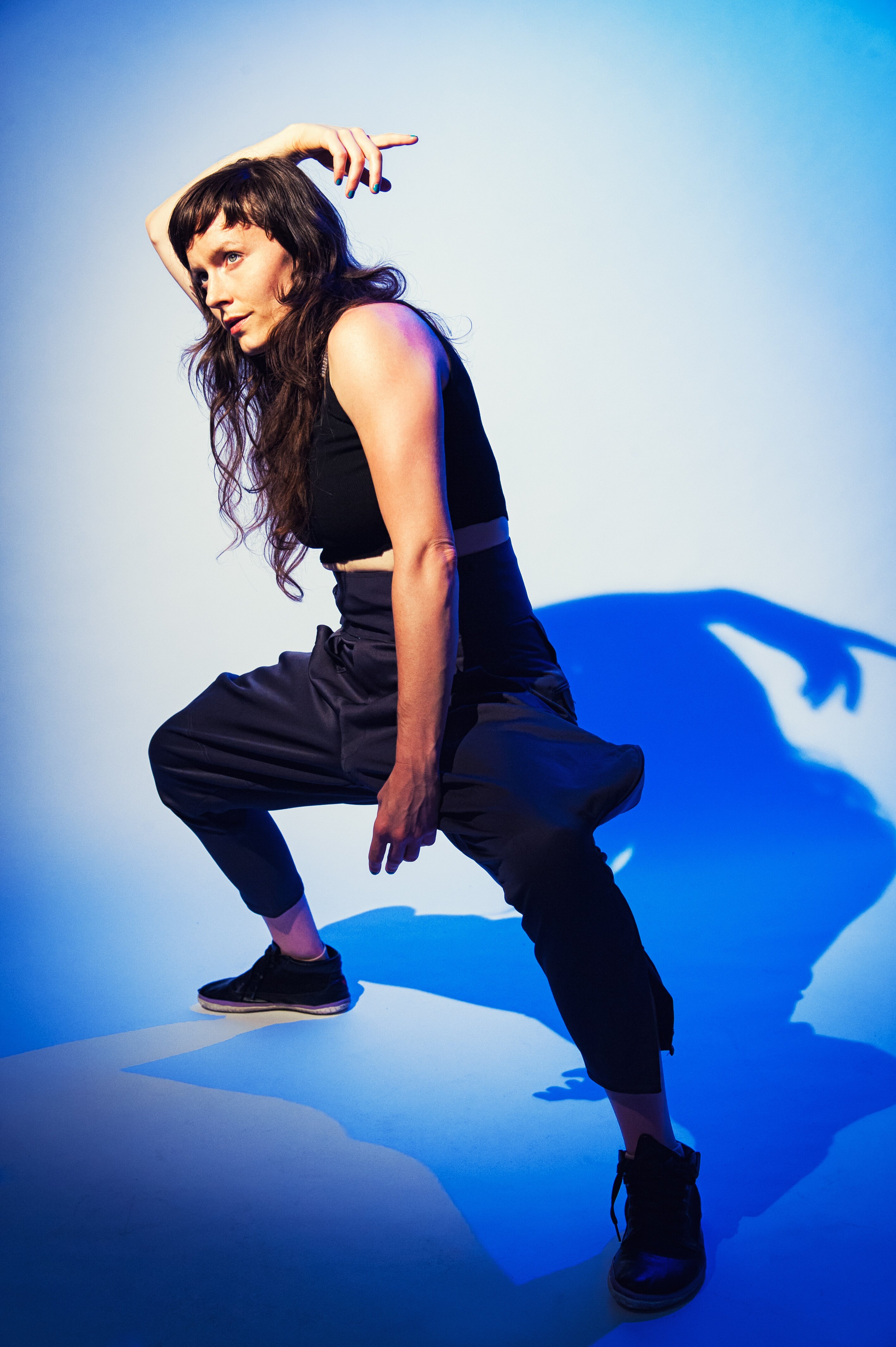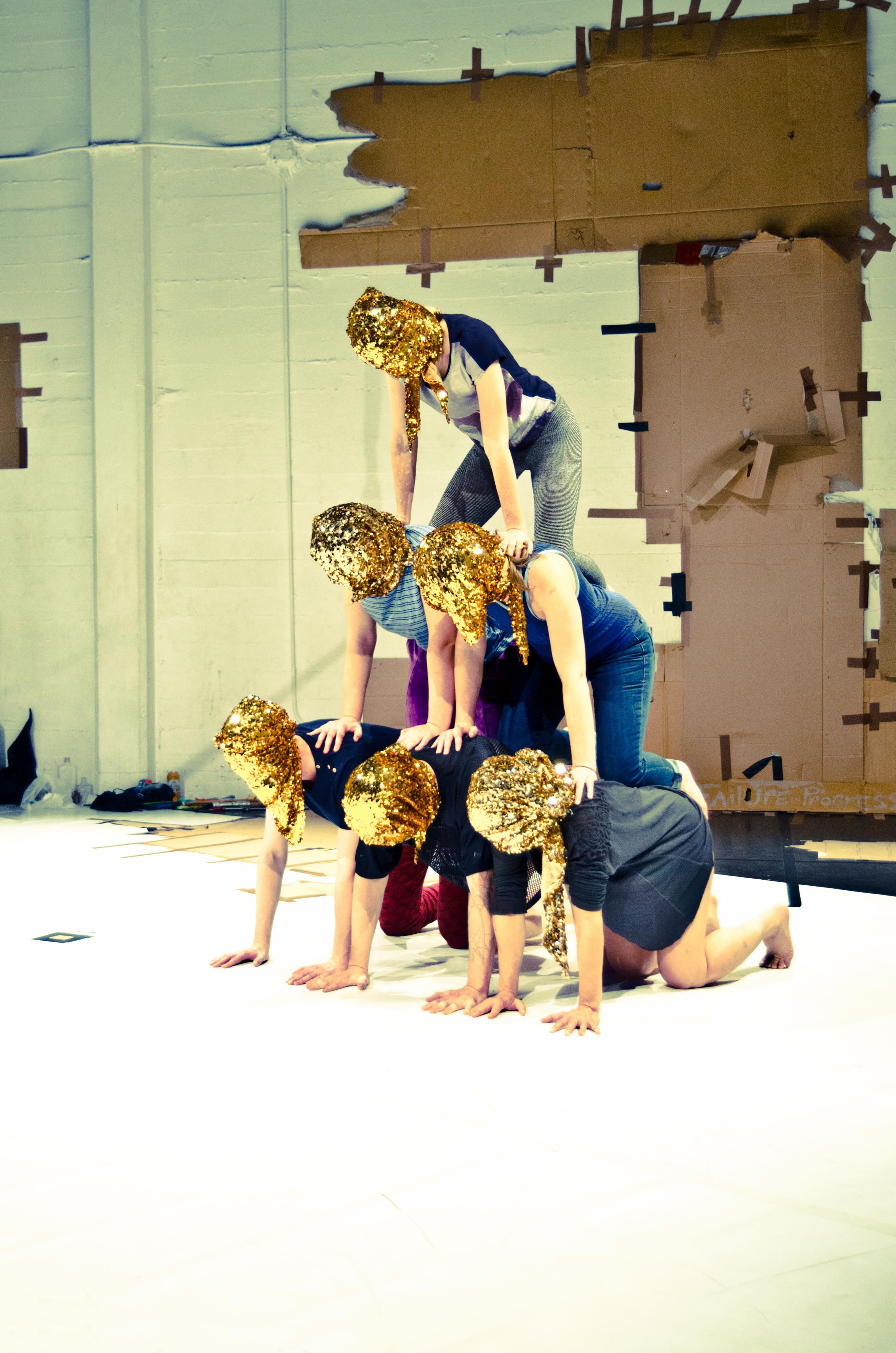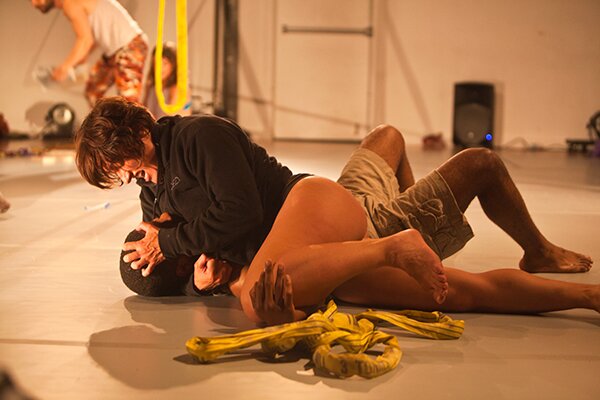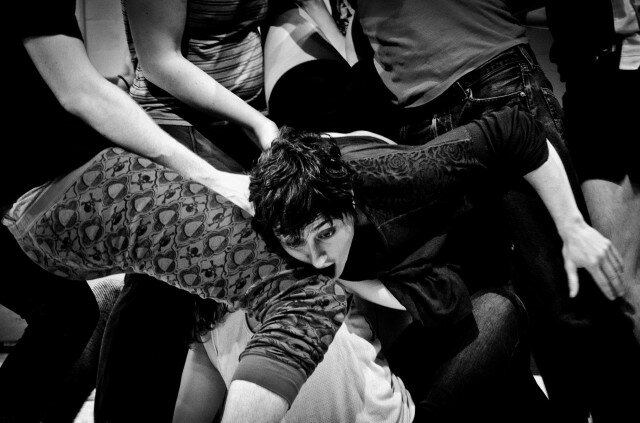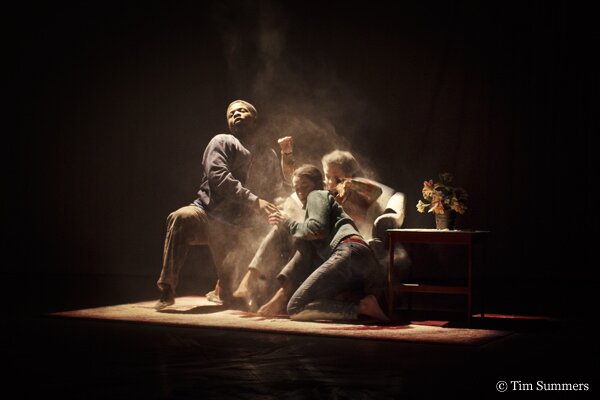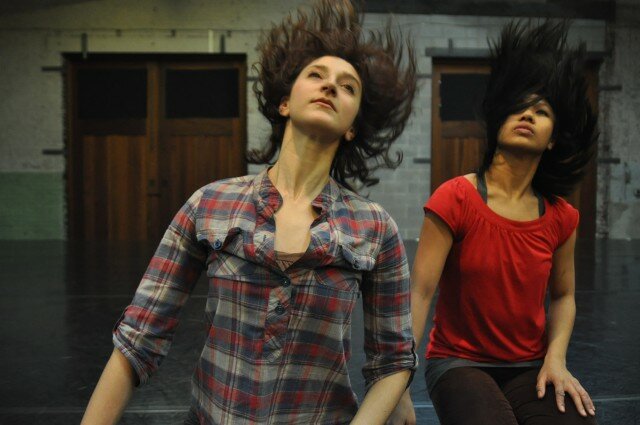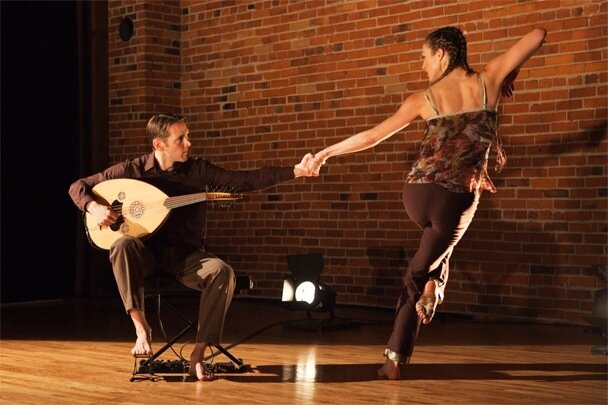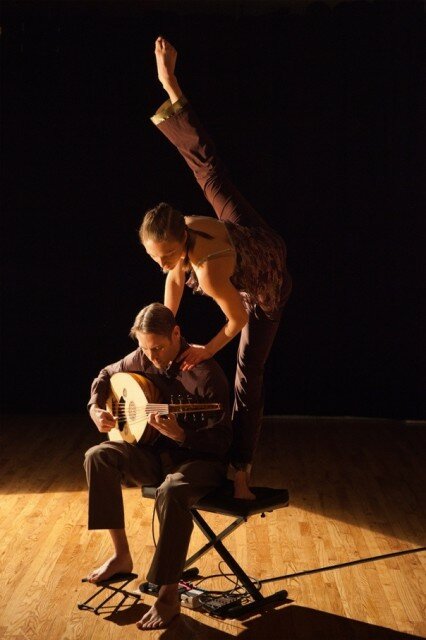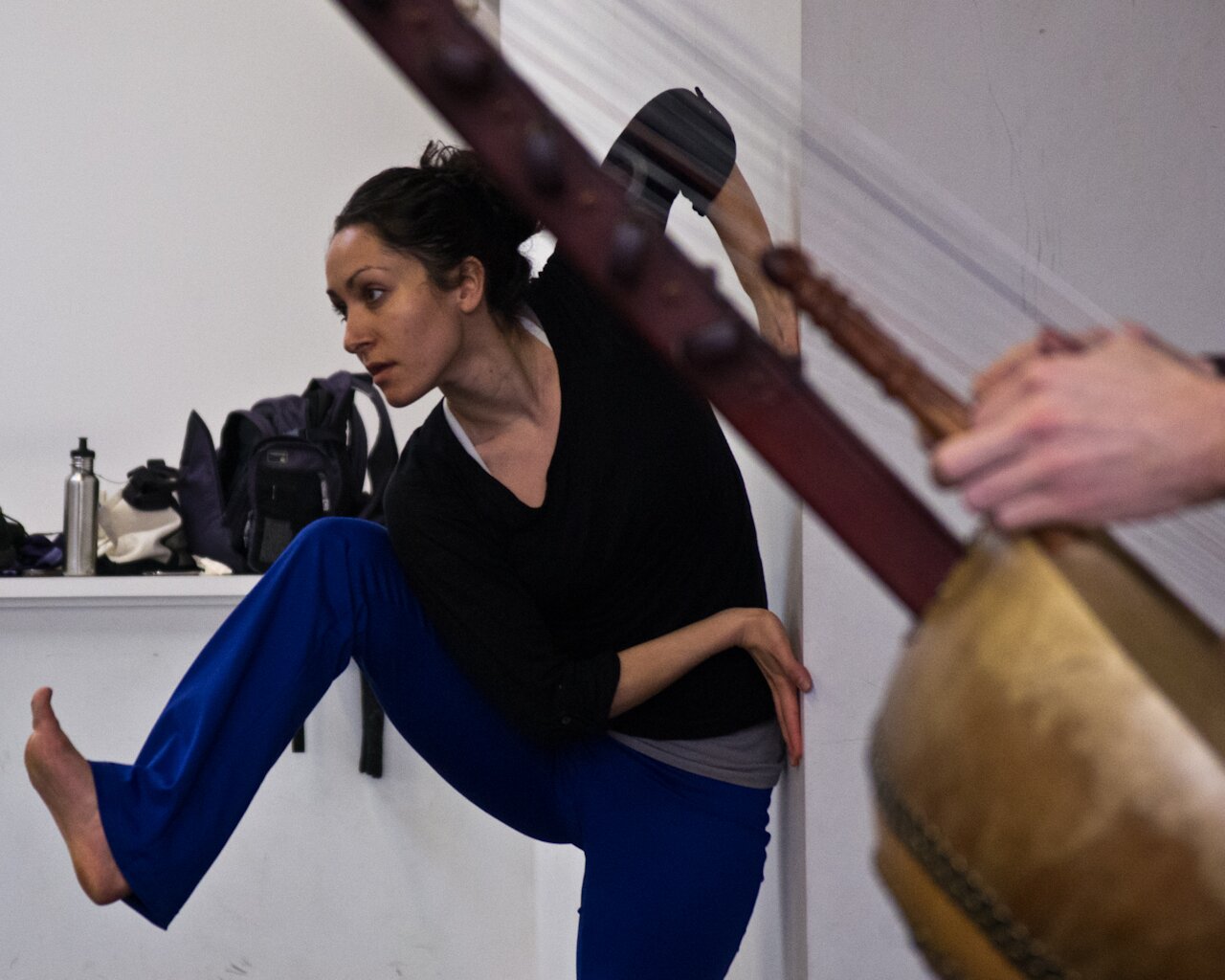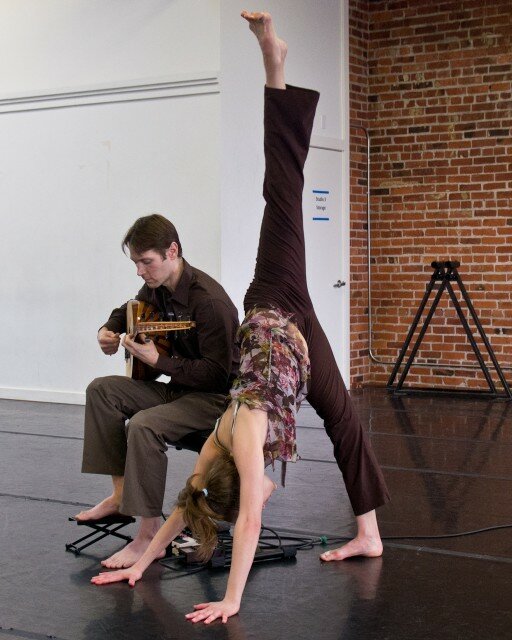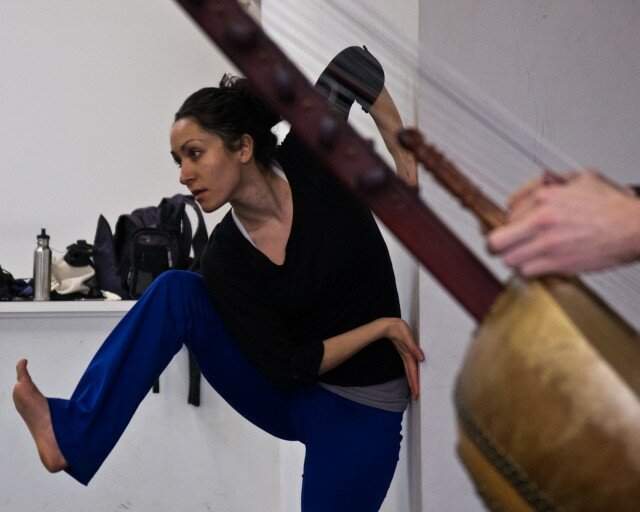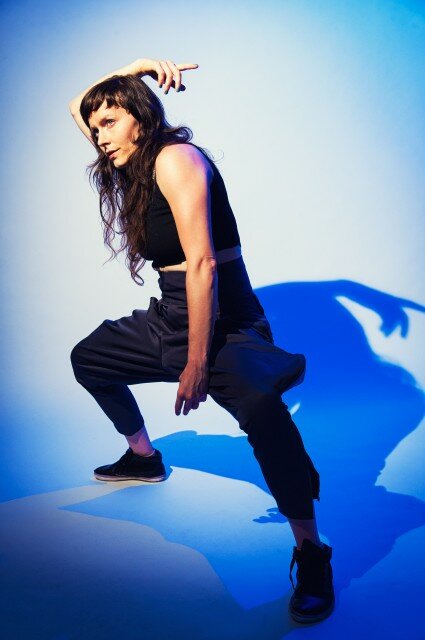
It takes bravado to name a show “The Most Innovative, Daring, and Original Piece of Dance/Performance You Will See This Decade.” Which may be the same amount of bravado it takes to use this title also as a tongue-in-cheek recognition of how originality in that sense doesn’t truly exist, but still make a case for why we continue to watch amazing new works.
The conceit is that current art is inspired by previous artists and movements and collaged together to make it uniquely part of the artist’s aesthetic. Amy O/tinyrage (through Oct 21 at Velocity Dance Center; tickets) uses this thesis for a dance/performance dedicated to all the artists who inspire her work. And not only is the idea wonderfully worked out, it totally works as performance.
Set up as a series of exhibits, Amy O explores how we interact with forms of movement including the YouTube videos and dance expressions that we don’t want to like but totally do anyway. Yes. Even booty dances and stripper poles influence how we approach dance/performance and art in general. Set up with three gorgeous screens for video projections and a small plexiglass stage with neon lights underneath, Amy O commands the space.
Particular exhibits of note included an interpretation of the choreography of Ciara’s “Ride” video–a video, Amy O admits afterwards through video projections, that simultaneously makes you want to make out with someone and rant about the stereotypical depictions of women. (She does both.)
The booty dance exhibit dominated the performance and was by far the most memorable. It features video of person-on-the-street interviews asking questions about how you view your butt: What do you think qualifies as a booty dance? Do you like the booty dance? Do you like butts? Is your butt useful, and so forth. Not only were these interviews hysterical–some ended in some fairly impressive demonstrations of booty rocking–but some of them were surprisingly touching, and some creepy. Turns out when you ask a bunch of people about their own and others’ butts they can’t stop talking.The variety of experience collaged into an riotous exhibit replete with a communal booty dance led by Amy O with a few presumed plants from the audience.
And then, there’s the pole dance. Okay, let me just say that drooling is unbecoming in an establishment like Velocity Dance Center. People look at you funny. They think you uncouth, uneducated. But damn. There is an art to pole dancing, especially in two-and-a-half-inch clear plastic stiletto heels that light up when you walk. (Just don’t leave your mouth open while appreciating this on its artistic merits. You’ll look a mess.)
In essence, where Amy O shines is in her use of what we commonly think of as either solely erotic or solely artistic. Amy O blurred this wonderfully with her exploration of some of the most sexual forms of dance and showing you how they are artforms.
Due in part to a year-long workshop process at Velocity, Amy O has created a potent piece, edited skillfully to lead us from one moment to the next building to the BIG ONE. The concluding exhibit dedicated to all the family, artists, collaborators that inspired her in her performance history including everyone from Janet Jackson, Pina Bausch, Martha Graham, and Pat Graney. Having witnessed the preceding building blocks, the final exhibit is truly extraordinary with a little bit of everything thrown in. Nods to hip hop, opera, pole dancing, booty dancing, ballet, and all in between, the final exhibit showcases Amy O’s incredible talent as a performer.
Not surprisingly, this show is sold out for its second weekend. However, if you get to the box office door by 7:30 p.m., you can see if you can snag some elusive walk-up seats.
